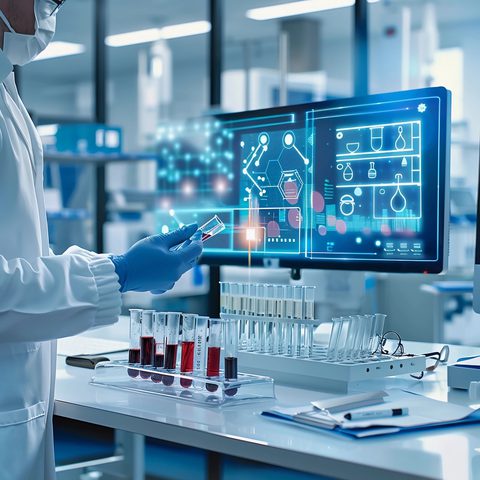

From AI to Application
Turning Enzyme Discovery into Scalable Reality
In the wake of SynBioBeta 2025, one trend stood out loud and clear; artificial intelligence is transforming enzyme discovery. With powerful machine learning tools now capable of predicting enzyme structures, functionalities, and even performance in silico, the discovery phase has become dramatically faster and more targeted. But while the front-end of innovation is accelerating, the back-end taking AI-designed enzymes through to real-world application still presents a critical bottleneck.
At BRAINBiocatalysts Life Science Solutions, we believe the future belongs to those who can bridge this gap. Here's what it takes to turn AI-generated potential into scalable, industrial impact.
1. The Promise of AI in Enzyme Discovery
AI platforms can now screen hundreds of thousands of enzyme variants, model structures, and predict substrate interactions in a fraction of the time traditional methods require. Platforms like our proprietary MetXtra™ enable a more targeted search for enzyme candidates, drawing from a vast, diverse sequence space. This reduces the number of wet-lab trials required and opens up novel biocatalytic possibilities that would otherwise remain hidden.
But prediction is only the first step.

2. Prediction is Not Performance
One of the most persistent misconceptions is that computationally promising enzymes are immediately usable. In practice, enzyme activity, enzyme production yield, and stability under process conditions often diverge from predictions. Factors like solubility, cofactor requirements, and substrate inhibition must still be tested, optimised, and validated in real biological systems.
This is where many discovery efforts stall the missing link between AI and application is bioprocess expertise.
3. Wet-Lab Integration: From Model to Molecule
To make AI useful, you need an infrastructure that quickly translates digital outputs into physical testing. This includes:
- Microbial enzyme production platforms and in-depth enzyme characterisation
- Micro- and mid-scale fermentation for evaluating enzyme production yield
- Smart design of experiment (DoE) tools to refine performance
At BRAIN-Biocatalysts Life Science Solutions, our process integrates AI as well as classical bioinformatics for enzyme discovery and design with lab-based testing in engineered microbial production strains, enabling rapid feedback loops and early selection of the best enzyme candidates.

4. Engineering for the Real World
Once an enzyme hit is confirmed in the lab, the next challenge is often scale. Will the enzyme be produced at sufficient quantities as well at 10 L? At 10,000 L? Can it be purified cost-effectively? Will it meet regulatory specifications?
This transition demands a team that understands:
- Strain optimisation for high-yield, stable production
- Downstream processing suited to the enzyme’s properties
- Formulation and freeze-drying where required for stability and shelf life
It’s not enough to engineer a functional enzyme; you need a bio-manufacturable product.
5. The Need for End-to-End Collaboration
To make AI-enabled discovery commercially viable, it must be paired with an end-to-end development pipeline from data-driven design to pilot and commercial production. Too often, enzyme innovation is handed off between discovery companies, engineering teams, and CDMOs, creating inefficiencies and loss of critical knowledge.
At BRAINBiocatalysts, we unify this process. Our teams in discovery, engineering, and manufacturing work in tandem with clients, ensuring each enzyme is designed with application in mind and scaled with performance intact.
AI is revolutionising how we discover new enzymes. But only a few can turn that insight into scalable solutions that meet industrial and pharmaceutical demands. With the right integration of technology, expertise, and infrastructure, AI doesn't just promise innovation, it delivers it.